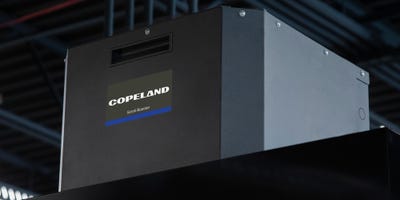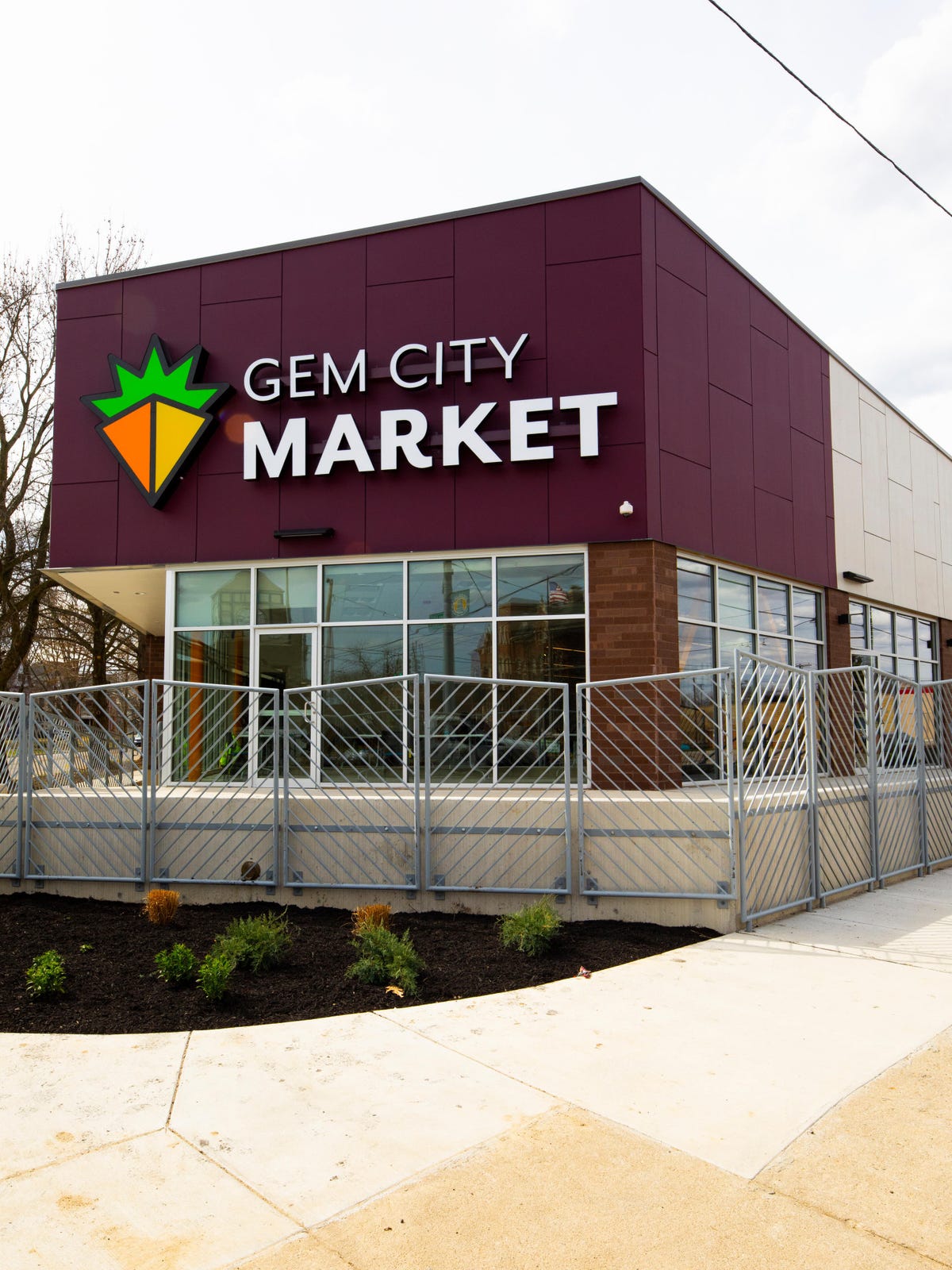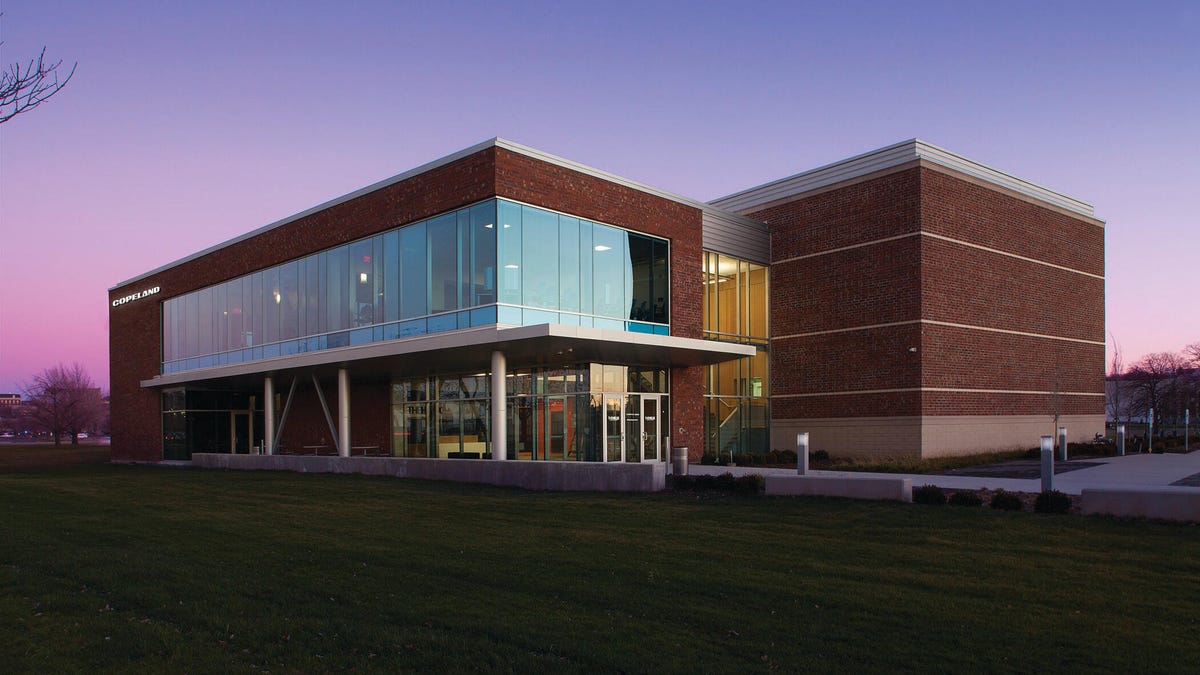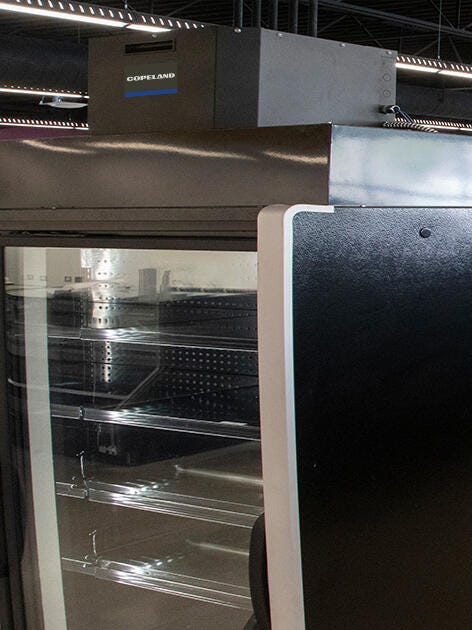Balancing Sustainability, Serviceability and Flexibility
In the ongoing search for viable and sustainable commercial refrigeration strategies, stakeholders often find themselves weighing the pros and cons of different system types.
We recently developed a new distributed system architecture called Copeland™ scroll booster that is designed specifically to help food retailers meet their requirements for sustainability and application flexibility without introducing unnecessary serviceability complexities.
Introducing the Copeland Scroll Booster Architecture
The Copeland scroll booster architecture is designed for maximum application flexibility and optimized for use with a low-pressure refrigerant like R-513A. Configurations can scale from small, low-charge systems utilizing condensing units to larger systems of distributed racks charged with several hundred pounds of refrigerant. One design feature that makes this booster architecture unique is its use of a single refrigerant (R-513A) for both low- and medium-temperature refrigeration loads. This approach simplifies system design while maximizing overall efficiencies.
Architecture Designed for Sustainable Supermarket Refrigeration
Achieving lower-GWP refrigeration and energy efficiency within a familiar operating footprint.


Proof of Concept and Future Evolution
The combination of high performance, sustainability and serviceability made the Copeland scroll booster an ideal choice for Gem City Market, a new small-format supermarket built in a food desert in Dayton, Ohio. The project involved collaboration among the affected Dayton community, city officials and commercial refrigeration industry leaders, Hussmann, Chemours and Emerson who donated their respective expertise and resources to the project.
When even lower-GWP refrigerants (such as A2Ls) are approved for use by applicable codes and standards, a distributed scroll booster system can be adapted for use with these ultra-low refrigerant alternatives (less than 150 GWP).

Développé au Centre d’innovation Hélix d’Emerson
Lors de l’inauguration du Centre d’innovation Hélix, une installation d’Emerson située sur le campus de l’Université de Dayton, nous voulions qu'il serve de catalyseur pour faire avancer la recherche et stimuler l’innovation dans l’industrie mondiale du chauffage, de la ventilation, de la climatisation et de la réfrigération (CVAC/R).
La collaboration avec les parties prenantes du Gem City Market s’est déroulée au sein du Centre d’innovation Hélix. Les parties prenantes du secteur se sont réunies pour mettre au point une configuration personnalisée du système de compresseur auxiliaire (booster) à spirale distribué en fonction de la surface au sol, du plan d’étage et des besoins en réfrigération propres au Gem City Market.
Are you interested in learning more about this architecture?
If you’re interested to learn how the Copeland scroll booster architecture can help your operations or project balance sustainability, serviceability, flexibility, fill out the form and one of our team experts will contact you.
Documents
| Nom | Langue | Type de fichier | Lien |
|---|---|---|---|
| White Paper - Distributed Scroll Booster Architecture for Sustainable Supermarket Refrigeration | English, Français | Télécharger |



